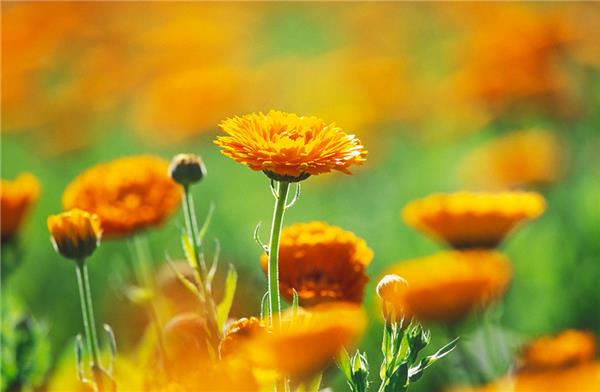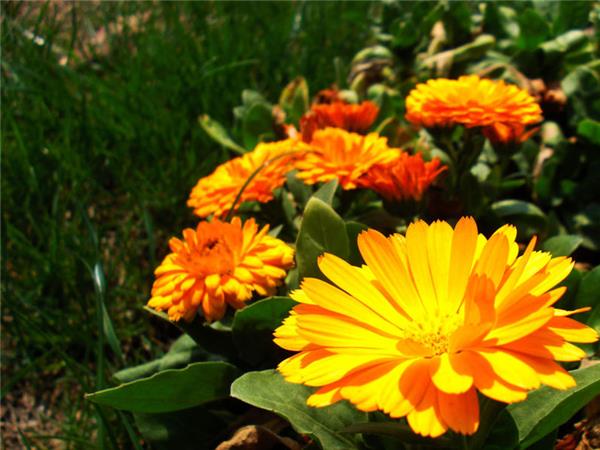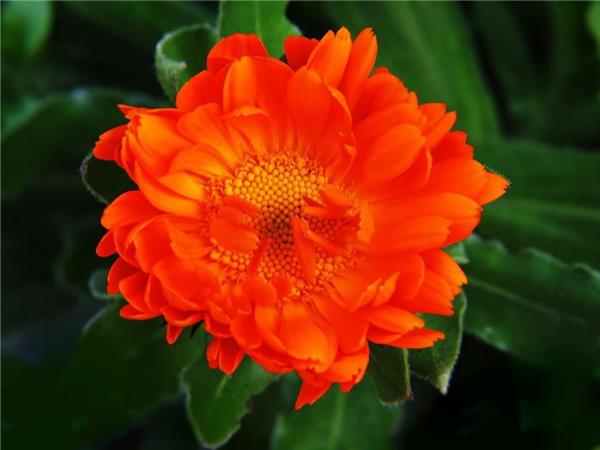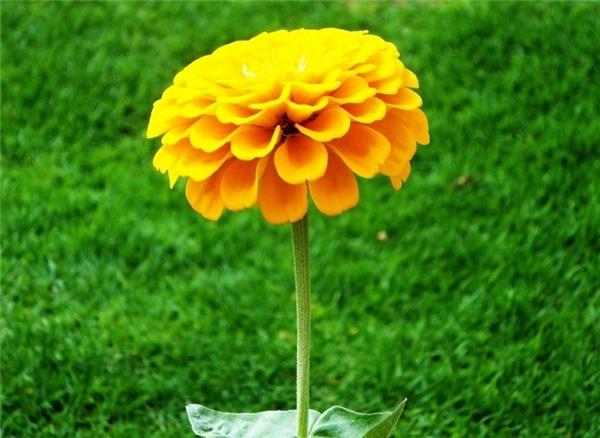Matters needing attention in marigold culture how to raise marigolds before they bloom
Marigold is a kind of plant whose name is enough to make people like it, and its gorgeous design and color is easy to attract people's attention, as if all the confusion has been illuminated and dispelled by it. Of course, its actual value is also very great, and it should be carefully taken care of when raised.

The efficacy of calendula
1. Calendula has strong resistance to sulfur dioxide and certain resistance to cyanide and hydrogen sulfide. It is an excellent anti-pollution flower and the main material of spring flower bed. It can be used as cut flowers and potted plants.
two。 Calendula is rich in a variety of vitamins, especially vitamin An and vitamin C, can be eaten in almost every part, and its petals have cosmetic functions. Flowers contain carotenoids, tomato hydrocarbons, butterfly plum flavin, jade yellow, volatile oil, resin, mucus, malic acid and so on. Roots contain bitterness, artemisia East glycol; seeds contain glycerides, waxy alcohols and alkaloids. Put it in shampoo to lighten the hair color.
3. Calendula has a light taste, and flowers and leaves have anti-inflammatory and antibacterial effects. The root can activate qi and blood, and the flower can cool blood and stop bleeding. European folk is used for all kinds of inflammation of skin and mucous membrane, and can also be taken internally to treat all kinds of inflammation and ulcers. Fresh flowers can be eaten in salad.

Culture method of Calendula
Soil: Calendula does not choose soil, it is suitable to use rich, loose and well-drained sandy loam or culture soil, the soil pH of 6-7 is the best. The suitable soil environment can make the marigold more branched and blossom.
Pot or transplant: when the seedlings are installed in the pot, put a coarse-grained matrix or ceramsite 2cm thick at the bottom of the pot as a filter layer, sprinkle a layer of fully mature organic fertilizer as base fertilizer with a thickness of about 1cm to 2cm, and then cover it with a layer of substrate, which is about 1cm thick, and then put in the plant to separate the fertilizer from the root system and avoid burning roots.
Sunlight: it is inseparable from the sunlight, but the stronger the light is, the higher the temperature in the cuttings is, the more exuberant the transpiration of cuttings is and the more water is consumed, which is not conducive to the survival of cuttings. Therefore, after planting, the sun must be shaded by 5080%, and then gradually removed after the root system grows: remove the sunscreen at 4:00 every sunny day, and cover it before 9:00 the next day.

Temperature: the optimum temperature for the growth of calendula is 7: 20 ℃, the seedlings can withstand the low temperature of-9 ℃ in winter, and the suitable temperature for adult plants is 0 ℃. If the temperature is too low, it needs to be protected by thin film, otherwise the leaves are vulnerable to freezing damage. Calendula grows when the winter temperature is above 10 ℃. With the increase of temperature in summer, the stems and leaves grow vigorously, the flowers become smaller and the petals decrease significantly.
Fertilization: 7-10 days after planting, coring measures should be taken to promote the marigold to be more branched and spray the leaf surface of the marigold with 0.4% solution for 1-2 times to adjust the plant height of the marigold. Calendula peanuts are fertilized once every semimonthly for a long time, and the fertilizer is sufficient, which can make calendula blossom more and bigger.
Insect pests: indoor cultivation of calendula often occurs Fusarium wilt and downy mildew, which can be controlled by spraying 65% zinc wettable powder 500 times. When the temperature rises in early summer, golden chrysanthemum leaves often find the harm of scab, which is sprayed with 2000 times the wettable powder of 50% verapamil. Early spring florescence is vulnerable to red spiders and aphids, which can be sprayed 1000 times with 40% omethoate emulsion.
Pruning: marigolds cut off branches with old and yellow leaves every two months. As long as the temperature is right, they can blossom all the year round.

Marigold is not very easy for people to like it, looking at its efforts to bloom the appearance of golden light, are we also moved? Raising a pot of marigolds at home will certainly add a lot of bright and vigorous vitality to the indoor life.
- Prev

[medicinal value of Saussurea involucrata] what are the uses of Snow Lotus
[medicinal value of Saussurea involucrata] what are the uses of Snow Lotus
- Next

[pot technology of enduring winter flowers] how to grow winter flowers
[pot technology of enduring winter flowers] how to grow winter flowers
Related
- Wuhan Hospital Iron Tree Blooming Result Was Instantly Frightened by the Gardener Master
- Which variety of camellia is the most fragrant and best? Which one do you like best?
- What is the small blue coat, the breeding methods and matters needing attention of the succulent plant
- Dormancy time and maintenance management of succulent plants during dormancy
- Minas succulent how to raise, Minas succulent plant pictures
- What are the varieties of winter succulent plants
- How to raise succulent plants in twelve rolls? let's take a look at some experience of breeding twelve rolls.
- Attention should be paid to water control for succulent plants during dormant period (winter and summer)
- Watering experience of twelve rolls of succulent plants
- Techniques for fertilizing succulent plants. An article will let you know how to fertilize succulent plants.

